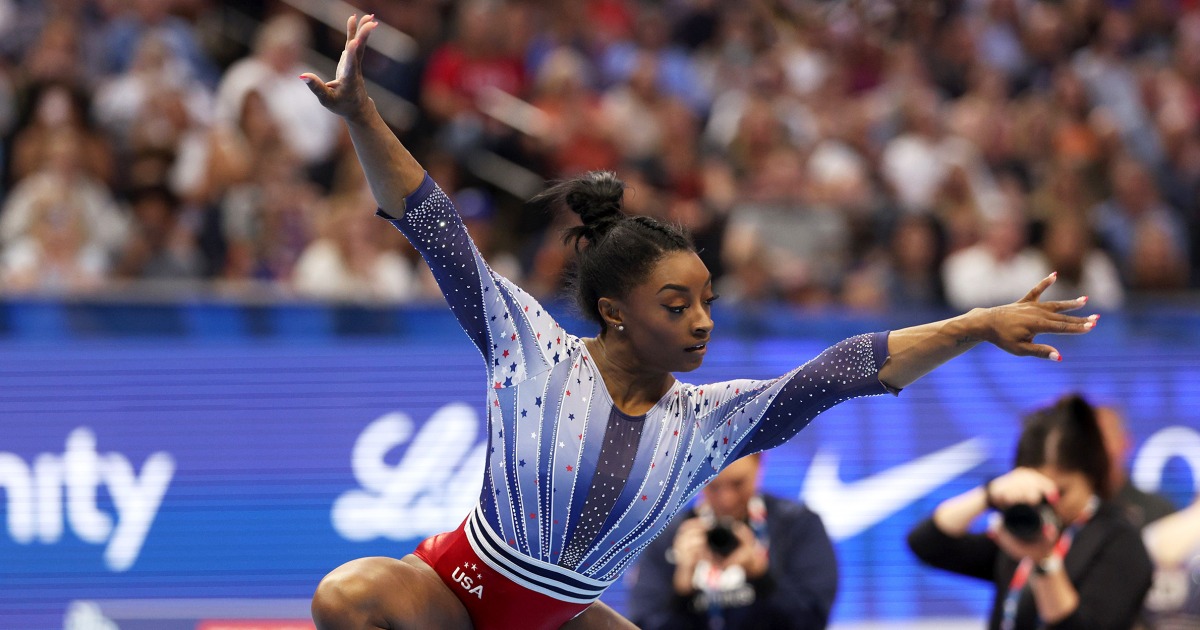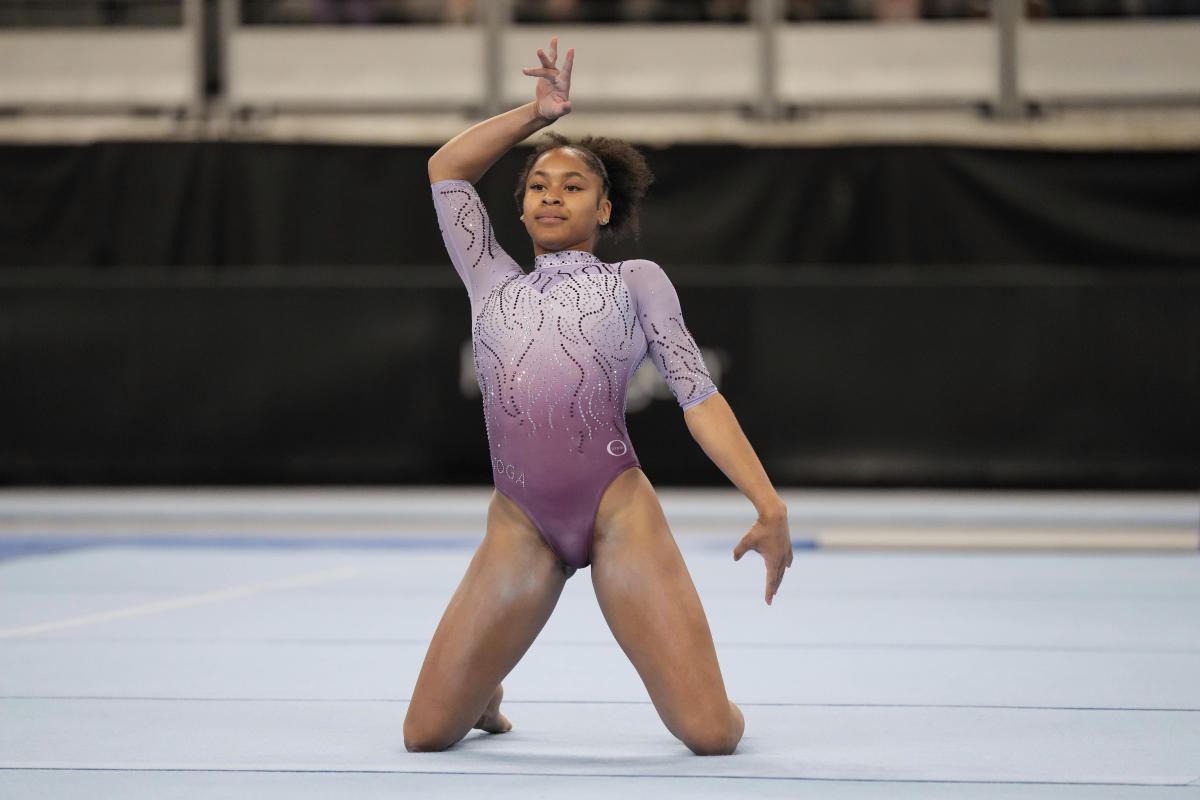Injury Impact on Gymnast’s Performance
Gymnastics olympic trials injury – Injuries are a significant concern for gymnasts, particularly during the high-pressure environment of Olympic trials. They can have a profound impact on a gymnast’s physical and mental well-being, potentially derailing their Olympic dreams.
The Olympic gymnastics trials are underway, and the competition is fierce. Unfortunately, several gymnasts have been injured during the trials, including name of gymnast. This is a major setback for these athletes, who have been training for years to compete in the Olympics.
The olympic trials schedule has been adjusted to accommodate the injuries, and the competition will continue as planned.
Physically, injuries can range from minor strains and sprains to severe fractures and dislocations. Common injuries include:
- Ankle sprains: Caused by over-rotation or landing awkwardly, these sprains can limit a gymnast’s ability to jump and perform complex skills.
- Knee injuries: Including ACL tears, meniscus tears, and patellar tendinitis, these injuries can significantly impact a gymnast’s ability to perform jumps, landings, and rotations.
- Wrist injuries: Caused by repeated impact and stress, wrist injuries can impair a gymnast’s ability to grip and support their weight.
- Back injuries: Such as stress fractures and herniated discs, these injuries can cause pain and limit a gymnast’s range of motion.
Mentally, injuries can be equally devastating. They can lead to anxiety, depression, and a loss of confidence. Gymnasts may fear re-injury, which can hinder their performance and make it difficult to push themselves during training and competition.
The gymnastics Olympic trials are a grueling competition, and injuries are not uncommon. One gymnast who has faced her fair share of injuries is dicello gymnast. Despite her setbacks, she has persevered and is determined to make it to the Olympics.
Her story is an inspiration to all who face adversity, and it shows that anything is possible if you never give up on your dreams.
Role of Medical Professionals
Medical professionals play a crucial role in managing and preventing injuries in gymnasts. They provide:
- Diagnosis and treatment: Accurately diagnosing and treating injuries is essential for a gymnast’s recovery and return to competition.
- Injury prevention: Medical professionals can develop personalized training programs that minimize the risk of injuries, such as by addressing muscle imbalances and improving technique.
- Rehabilitation: They guide gymnasts through rehabilitation exercises to regain strength, flexibility, and range of motion after an injury.
- Education: Medical professionals educate gymnasts on injury prevention, nutrition, and the importance of rest and recovery.
Risk Factors and Injury Prevention Strategies: Gymnastics Olympic Trials Injury

Gymnastics is a physically demanding sport that requires high levels of strength, flexibility, and coordination. As a result, gymnasts are at risk for a variety of injuries, including sprains, strains, fractures, and dislocations.
There are a number of factors that can contribute to injuries in gymnastics, including:
- Overuse: Gymnastics training often involves repetitive movements that can put stress on the body’s joints and muscles.
- Inadequate warm-up: Warming up properly before training can help to reduce the risk of injuries.
- Improper technique: Using proper technique when performing gymnastics skills can help to reduce the risk of injuries.
- Inadequate conditioning: Gymnasts who are not properly conditioned are more likely to suffer injuries.
- Nutritional deficiencies: Gymnasts who do not eat a healthy diet may be more likely to suffer injuries.
There are a number of strategies that coaches and athletes can implement to help prevent injuries in gymnastics, including:
- Proper training techniques: Coaches should teach gymnasts proper training techniques to help reduce the risk of injuries.
- Gradual progression: Gymnasts should gradually increase the intensity and duration of their training to avoid overloading their bodies.
- Adequate warm-up: Gymnasts should always warm up properly before training to help reduce the risk of injuries.
- Proper conditioning: Gymnasts should be properly conditioned to help reduce the risk of injuries.
- Nutritional counseling: Gymnasts should receive nutritional counseling to help ensure that they are eating a healthy diet.
By following these strategies, coaches and athletes can help to reduce the risk of injuries in gymnastics.
Psychological Impact of Injuries on Gymnasts

Injuries are an unfortunate reality for gymnasts, and they can have a significant psychological impact. Gymnasts who are injured may experience anxiety, depression, and loss of motivation. They may also struggle with body image issues and feelings of guilt or shame.
There are a number of coping mechanisms that gymnasts can use to manage the emotional challenges of injury. These include talking to a therapist or counselor, joining a support group, and practicing relaxation techniques. Gymnasts can also find support from their coaches, teammates, and family members.
Case Study, Gymnastics olympic trials injury
Simone Biles, a four-time Olympic gold medalist, has spoken openly about the psychological impact of her injuries. In 2018, she suffered a kidney stone that forced her to miss the World Championships. She later said that the injury was “the hardest thing I’ve ever had to go through.” Biles also struggled with an ankle injury in 2019, which forced her to withdraw from the U.S. Championships. She said that the injury made her feel “lost” and “like a failure.”
